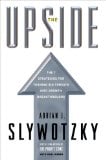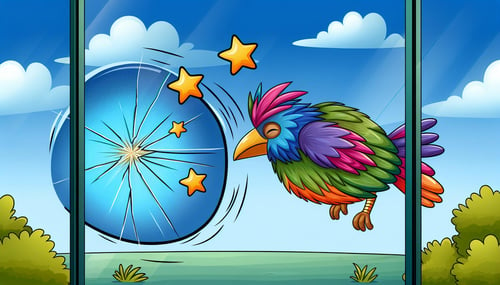I am an avid reader and am almost always in the middle of a book or two. I enjoy reading and learning, but I also feel that it is a responsibility I have as someone who regularly works to help others find their success. Then again, that responsibility isn’t unique to me; I’ll argue that it applies to anyone who has clients who turn to you for advice.
So, I wanted to share my favorite books from 2010 and a little of what I learned from each. Wendy got excited about this and wanted to participate, so I let her add her thoughts, as well. It’s always interesting what different things people take away from the exact same situation.
“A Seat At The Table” by Marc Miller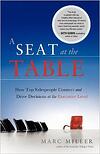
What I learned – I learned how to clearly identify the types of strategic decisions made by decision makers. With that knowledge, I have been able to develop a process through which the producers with whom I can work can position their solutions in a much more strategic manner and in a way that resonates more clearly with the C-suite.
Wendy weighs in: Sales people often have a skewed view of how their solutions (read: product) benefit the client, therefore, making it difficult to transition from a product selling organization to a solution selling organization. Marc shows us that it is possible to makes this transformation with an existing sales team when you’ve got the right vision and leadership to enforce the changes company-wide.
“Inbound Marketing” by Brian Halligan and Dharmesh Shah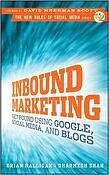
What I learned – I learned that the rules of marketing have changed. Creating a brand is no longer just about writing a check, it’s about getting out there and becoming a participant in social media. When you give a prospect a reason to initiate engagement with you, well, obviously, your likelihood of success goes up exponentially. While I don’t think the ideas in the book completely replace traditional approaches to marketing, I do agree that they need to be an integral part of any marketing strategy.
Wendy’s 2 cents: I thought that Inbound Marketing provided a good overview and action guide for creating your online marketing plan with to-do lists and tools to get the job done. However, to get a good in-depth understanding of how social marketing can be a viable & critically important marketing vehicle for your business, I recommend The New Rules of Marketing & PR by David Meerman Scott. Read the 1st half and get a full understanding of the New Rules, and read the second half to figure out how to make it happen. Then get started! If you haven’t yet embraced social marketing as an integral part of your business, you’re falling behind.
“Getting Naked” by Patrick Lencioni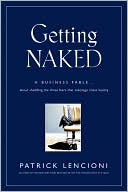
What I learned – This is probably the most impactful book I have read all year. Allowing yourself to be vulnerable is the most empowering characteristic you can take into your client relationships. We have to recognize that one safe idea is rarely going to result in the best solution. Instead, we have to sort through countless ideas, some horrible and some great, to make sure the one best solution is identified. As strong as the idea of vulnerability has proven to me, an even more powerful message is to start acting as though you have already been hired as early in the prospecting stage as possible. The sooner you start delivering value, the sooner you will get hired.
Wendy’s takeaway: This is an outstanding book that helps bridge the drastic difference in personal vs. business relationship expectations that have been so prevalent in American culture. Building any type of relationship requires trust, and without allowing ourselves to be vulnerable, there is always at least a little bit of doubt about motivations. Business relationships are not excused from this idea of vulnerability and trust; although I believe that the rules of professionalism have dictated a reserved approach with clients. Lencioni not only gives us permission to drop those walls that create the professional distance, he insists that it’s critically necessary for doing business today.
“The Upside” by Adrian Slywotzky
What I learned* – While businesses tend to focus their risk management strategies on the traditional risks (hazard, financial, and operational), they are quite often ignoring the strategic risks, some of which are certain to be faced by every organization at one time or another. Strategic risk has become one of the greatest sources of lost value in the global economy. While it is impossible to avoid these risks entirely, those companies who understand them, anticipate them, shape them, and implement effective counter measure strategies will find they’re in a much better position to survive and even thrive in today’s risk-rich environment. The “upside” of this risk awareness becomes an opportunity to expose the risks for the opportunities that lie within.
*I read this in 2009, as you'll see from the linked article, but we held a book club on it in 2010, so it made the list.
Wendy’s thoughts: I loved this book and reference it frequently for it’s great examples and excellent explanations. Strategic risks target crucial elements in the design of your business model, company vision/values, and company culture. These risks can be avoided or at least mitigated if your model is flexible enough to adjust to changes in the industry or the economy. In order to do that, you must structure the other foundational elements of your business to be passionately focused on the customer, and to be acutely aware, at all levels of the organization, what is happening in the industry, the local marketplace, and with your competition. With awareness, ingenuity, and adaptability (the new must-have’s for today’s businesses) you’ll able to find the opportunities within the risks - and without, you’ll be one of Slywotzky’s historical comparison companies.
So, there are just four of the books we read last year and maybe a couple of reasons for you to pick them up and read them for yourselves. While we’re not necessarily encouraging you to read these books, we are challenging you to read books that will benefit you and, in turn, help you to benefit your clients.

